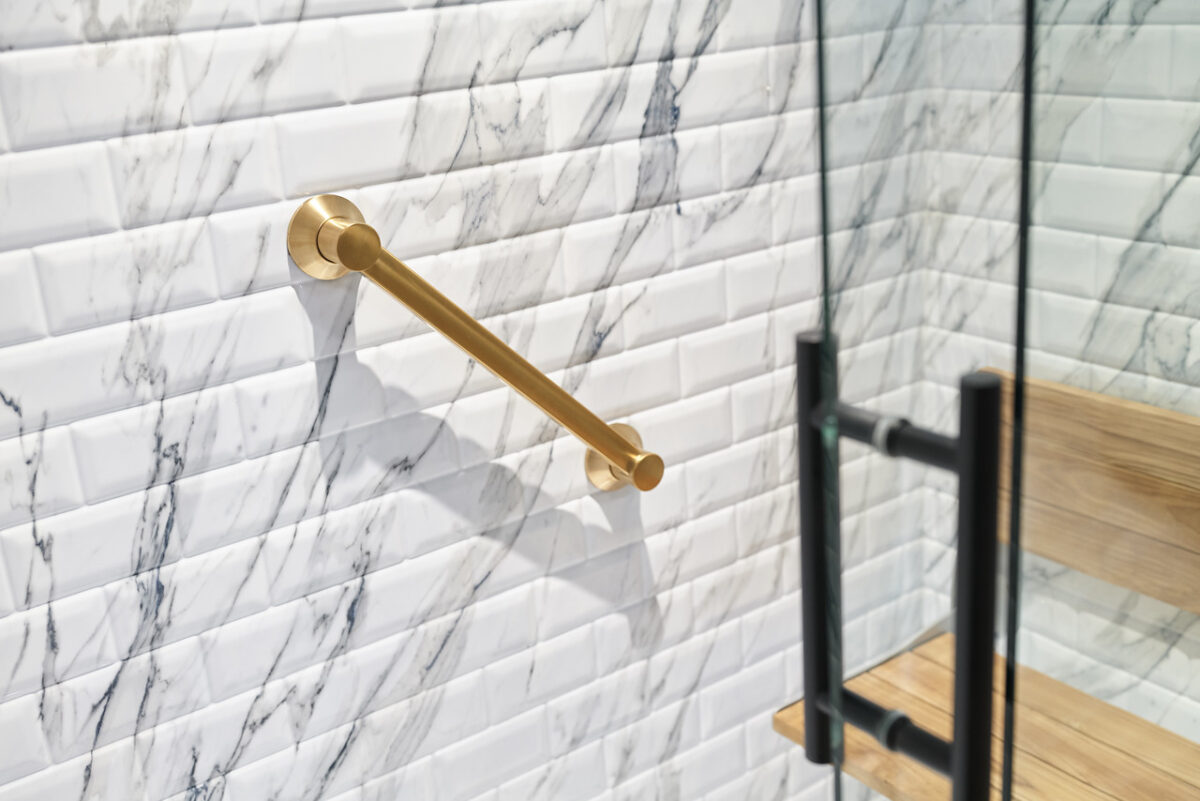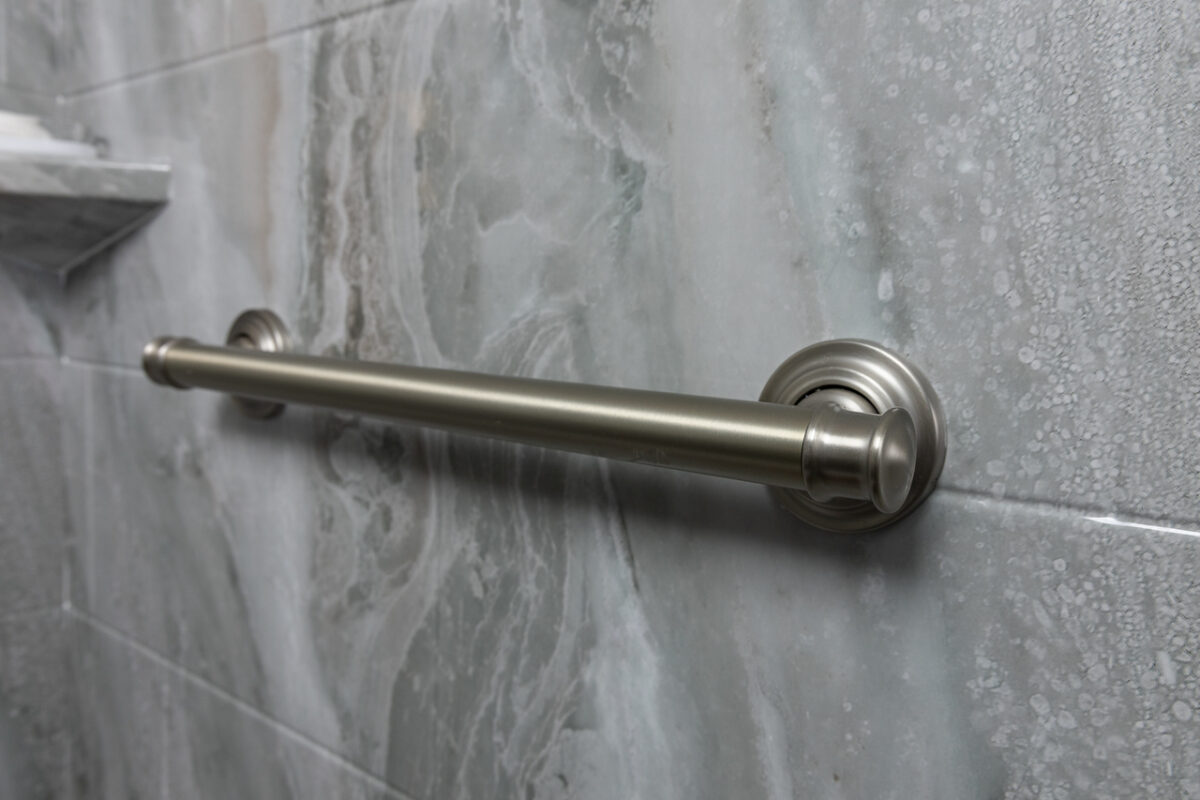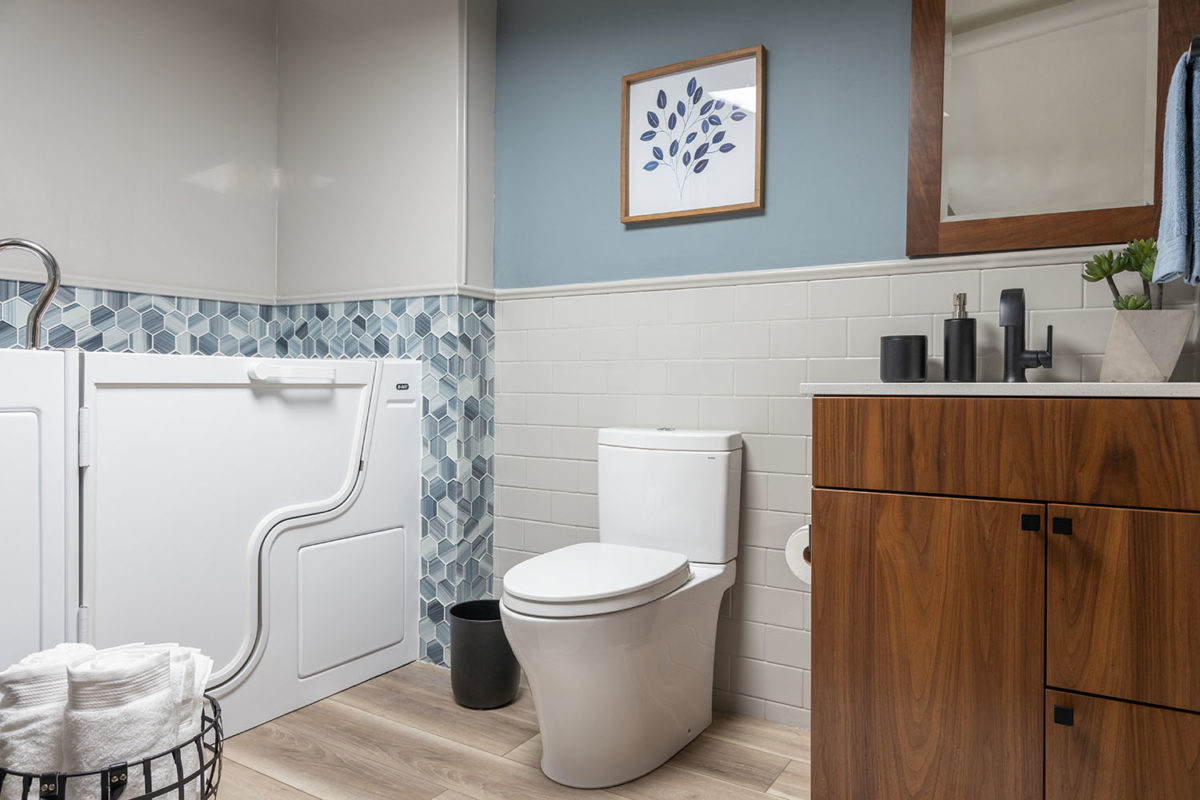It is a lesson one family had to learn twice: the importance of bathroom grab bars.
A colleague’s grandmother loved taking baths and had done so her entire life. As she grew older, getting out of her tub–an old-school, traditional bathtub and shower combo–became more challenging. One day, as she was stepping out of the tub, she slipped and grabbed frantically at a nearby towel bar, hoping to break her fall.
The towel bar, which was designed to hold the weight of a couple towels, and not that of a human adult falling backward, gave way, and came out of the wall entirely. Miraculously, our colleague’s grandmother only suffered some bumps and bruises from her undignified fall back into the tub.
Horrified, her family swung into gear, and had a grab bar installed next to the tub, carefully placed so grandmother could grasp it when entering and leaving her bath.
That lesson stuck with the family, and decades later, when our colleague’s mother downsized from the family home to a condominium, she had a sturdy grab bar installed next to the shower in her master bathroom before moving in.
However, in a nearly identical incident, a visiting relative slipped in the guest bathroom, and in an eerie repeat of the accident years earlier, seized the nearby towel bar. Unsurprisingly, the towel bar immediately came out of the wall, supplying little-to-no assistance. Happily, this person also escaped serious injury, though they were plenty sore for a week or so. Another grab bar was promptly installed in the home.
Why grab bars for the elderly are important
Year in and year out, bathrooms are the most dangerous room in the house. According to the Centers for Disease Control and Prevention, more than a quarter million Americans visit the emergency room each year due to an injury suffered in the bathroom, and nearly 14% require hospitalization.
The same CDC study found that the most hazardous activities for people of all ages are bathing, showering, and getting out of the tub or shower. While only 2.2% of injuries occur when getting into the tub or shower, almost 10% occur while getting out. Most bathroom-related ER visits are caused by injuries in or near the bathtub or shower. (1)
Unsurprisingly, injury rates increase with age. Tub and shower related injury rates rose markedly, from 49.7 per 100,000 among people between 15–24 years old to 200.2 among those aged 85 years or more. (1)
Many of these accidents could be prevented with the addition of strong, safe grab bars in the bathroom.

Where to locate safety grab bars in the bathroom
Adding grab bars to bathrooms makes them safer for everyone, especially those in their later years. Where to locate grab bars is dependent upon the bathroom configuration, and the previously mentioned CDC report offers some broad guidelines:
“Injuries might be reduced through environmental modifications, such as putting non-slip strips in the tub or shower and adding grab bars inside and outside the tub or shower to reduce falls and installing grab bars next to the toilet for added support if needed.” (2)
A good place to find useful guidelines to use as a starting point is the Americans with Disabilities Act.
- Combination tub & shower: Bathrooms with a combination tub and shower can benefit from the installation of two grab bars within the bath/shower area. To help people raise themselves from the tub, the ADA recommends installation of a bar 8 to 10 inches from the rim of the tub. Another bar placed higher on the wall (33 to 36 inches from the base of the tub) is also recommended. This second bar can aid those standing up as they enter and exit the tub, as well as during a shower.
- Walk-in shower: Placement of grab bars in walk-in showers depends heavily on the size and layout of the shower. In larger showers, bars on both the side and back walls can be useful. Showers with benches need a bar that is handy when the user is either standing or sitting. A long, angled bar can be a good solution.
- Stand-alone bathtub: A stand-alone bathtub with a deck surround can easily be modified with small safety bars installed on the deck, on either side of the tub, where they can be used to help people keep their balance and provide security when they either enter or leave the tub.
These guidelines and ideas can be useful; however, it is important to consider the height, weight, and mobility of all who will be using the bathroom and adjust the placement of bars accordingly.
Grab bars outside the shower or tub
Remember the fate of the towel racks at the beginning of this story?
In addition to placing grab bars in the shower or tub surround, it is also important to have a grab bar placed outside the tub or shower, because most injuries happen when the bather is leaving, and the interior grab bars are out of reach. To ensure safety, a safe grab bar outside the tub will provide peace of mind–and a better option than a towel rack.
For a walk-in shower, the outside grab bar can be shorter, and placed about 36” from the shower floor. A longer vertical bar makes sense for a combination shower and tub, enabling the bather to securely grasp the handle as they either rise from the bath or step out of the shower.

Types & styles of grab bars
As more Americans plan to age in place and are building safety features into their bathroom remodels, manufacturers of bathroom fixtures are responding with great-looking, stylish grab bars and innovative solutions that combine form with safety.
From a style standpoint, many manufacturers are including grab bars in their collections. Designed to coordinate with faucets, shower heads and other accessories, grab bars are available in a wide variety of colors and finishes that add polish to the completed bathroom.
This beautiful, spa-inspired bathroom features Re-Bath’s handsome Sandstone Smooth shower walls, along with teakwood folding shower seat from Moen and a stylish angled grab bar in a warm brushed nickel finish.
Stand-alone grab bars are not the only option for providing secure assistance in the bath. Handrails and grab bars are increasingly being combined with basic bathroom hardware in clever designs that look polished while creating a more secure environment. Examples include:
- Handrails with toilet roll holders: Toilets are another bathroom area where grab bars or handrails can provide crucial assistance and help people live independently with dignity. Handrails including an easy-to-change curved toilet roll holder are smart solutions that can make lives easier in multiple ways.
- Shower shelves with a grab bar: Space is often at a premium in the shower. Some manufacturers have created grab bars with integrated shelves, combining safety with a convenient place for shampoo bottles, soap and other necessaries.
- Combination towel racks and grab bars: The racks that keep towels within handy reach are the perfect location for grab bars. Manufacturers are recognizing this and have created stylish grab bars that include towel racks, keeping the bar free for ease of use, while also providing a convenient place to hang towels.
Curved grab bars are also gaining in popularity. Just as sturdy as other models, curved grab bars range from dramatic, horseshoe shapes to gently-curving bars. The more dramatic shapes can be grasped from either the top or the side. All add a sculptural element to the bathroom’s look and add visual interest.
Grab bars for the elderly are a good idea, but they are not the only ones who can benefit. Life is unpredictable, and secure handrails in the bathroom make sense for every age group, especially if multiple generations are in the home. The wide variety of great-looking styles of grab bars available today makes it easy to incorporate them into any bathroom remodel. The moment someone in your family needs them, you will be glad they are there.
